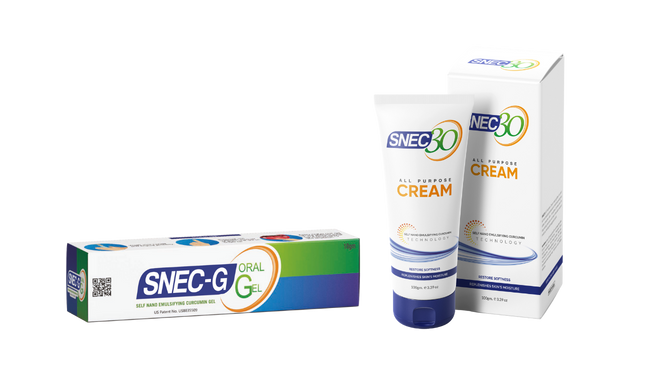- Home
- Products
Products
Upto 20% off on all products
Select Snec 30 health & wellness products

14 products
SNEC30-120 Curcumin Capsules I Boosts Immunity
On Sale
![]()

SNEC30-120 Curcumin Capsules I Boosts Immunity
8 reviews
- Regular price
- ₹ 2,745.00
- Sale price
- ₹ 2,745.00
- Regular price
-
₹ 3,432.00 - Unit price
- /per
60 Curcumin Capsules I Viral Infection I Boosts Immunity
On Sale
![]()

60 Curcumin Capsules I Viral Infection I Boosts Immunity
8 reviews
- Regular price
- ₹ 1,458.00
- Sale price
- ₹ 1,458.00
- Regular price
-
₹ 1,716.00 - Unit price
- /per
SNEC30 Plus 45mg I Reduce Inflammation & Pain
On Sale
![]()

SNEC30 Plus 45mg I Reduce Inflammation & Pain
2 reviews
- Regular price
- ₹ 1,160.00
- Sale price
- ₹ 1,160.00
- Regular price
-
₹ 1,260.00 - Unit price
- /per
Ashwagandha Capsule I Anxiety & Stress Disorders
On Sale
![Ashwagandha_capsule]()

Ashwagandha Capsule I Anxiety & Stress Disorders
1 review
- Regular price
- from ₹ 840.00
- Sale price
- from ₹ 840.00
- Regular price
-
₹ 990.00 - Unit price
- /per
BOSWELLIA Capsule I Joint Pain I Inflammation
On Sale
![Boswellia_1]()

BOSWELLIA Capsule I Joint Pain I Inflammation
1 review
- Regular price
- from ₹ 840.00
- Sale price
- from ₹ 840.00
- Regular price
-
₹ 990.00 - Unit price
- /per
SNEC30-15 Curcumin Capsules I Boosts Immunity (Pack of 2)
On Sale
![]()

SNEC30-15 Curcumin Capsules I Boosts Immunity (Pack of 2)
- Regular price
- ₹ 772.00
- Sale price
- ₹ 772.00
- Regular price
-
₹ 858.00 - Unit price
- /per
SNEC30 Bathing Bar I Acne I Skin Infections I Hives & Rash
On Sale
![Snec30 bathing bar]()

SNEC30 Bathing Bar I Acne I Skin Infections I Hives & Rash
- Regular price
- ₹ 162.00
- Sale price
- ₹ 162.00
- Regular price
-
₹ 180.00 - Unit price
- /per
Snec30 Curcumin Gargle I Antiseptic I Anti Bacterial
On Sale
![SNEC30 GARGLE]()

Snec30 Curcumin Gargle I Antiseptic I Anti Bacterial
2 reviews
- Regular price
- ₹ 190.00
- Sale price
- ₹ 190.00
- Regular price
-
₹ 210.00 - Unit price
- /per
SNEC-G Oral Gel I Decrease burning sensation I (Pack of 2)
On Sale
![Snec30Gel]()

SNEC-G Oral Gel I Decrease burning sensation I (Pack of 2)
1 review
- Regular price
- ₹ 177.00
- Sale price
- ₹ 177.00
- Regular price
-
₹ 196.00 - Unit price
- /per
SnecP Drops I Viral Infections I Reactive Lymphadenopathy
On Sale
![]()

SnecP Drops I Viral Infections I Reactive Lymphadenopathy
- Regular price
- ₹ 149.00
- Sale price
- ₹ 149.00
- Regular price
-
₹ 165.00 - Unit price
- /per
SNEC30 Moisturizing Lotion With Curcumin I Dry Skin I Sensitive Skin
On Sale
![]()

SNEC30 Moisturizing Lotion With Curcumin I Dry Skin I Sensitive Skin
- Regular price
- ₹ 365.00
- Sale price
- ₹ 365.00
- Regular price
-
₹ 395.00 - Unit price
- /per
SNEC30 All Purpose Cream I Acne I Skin Infections
On Sale
![]()

SNEC30 All Purpose Cream I Acne I Skin Infections
- Regular price
- ₹ 385.00
- Sale price
- ₹ 385.00
- Regular price
-
₹ 425.00 - Unit price
- /per
- Page 1 of 2
- Next page
Use left/right arrows to navigate the slideshow or swipe left/right if using a mobile device

